Non-Surgical Blog
PRP While Pregnant: What You Need to Know
June 13, 2025

- Platelet-rich plasma (PRP) therapy utilizes growth factors from your own blood to promote healing and rejuvenation.
- More research is needed to fully understand the safety and efficacy of PRP therapy during pregnancy.
- Alternatives to PRP therapy during pregnancy include non-invasive treatments tailored to address specific concerns.
- Consult with a qualified healthcare professional for personalized advice and to determine the best course of action for your situation.
Platelet-rich plasma (PRP) therapy has gained significant popularity in recent years as a promising treatment option for various medical and cosmetic concerns. However, when it comes to pregnant women, it is crucial to prioritize the health and well-being of both mother and fetus.
This article aims to shed light on the use of PRP therapy during pregnancy, addressing safety considerations and potential benefits while emphasizing the importance of consulting with a qualified healthcare provider to make informed decisions.
Understanding PRP Therapy
Platelet-rich plasma (PRP) therapy is a cutting-edge treatment that harnesses the body’s natural healing capabilities to rejuvenate and repair tissues. It involves extracting a small amount of the patient’s own blood and processing it to concentrate the platelets, which are rich in growth factors.
These growth factors play a crucial role in tissue regeneration, collagen production, and wound healing. When PRP is injected into targeted areas, it stimulates cell growth, reduces inflammation, and accelerates the body’s natural healing process. This makes it a popular choice for addressing various concerns.
The Science Behind PRP
To understand how PRP works, we need to understand the components involved. Blood is made up of red blood cells, white blood cells, platelets, and plasma. Platelets are tiny cells responsible for clotting blood and promoting healing. Plasma is the liquid component of blood that carries these cells.
To create PRP, a small amount of blood is taken from the patient’s arm, just like a regular blood test. The blood is then placed in a specialized machine called a centrifuge. This machine spins the blood at high speed, separating the components based on their density.
The process results in a concentrated layer of platelets, referred to as platelet-rich plasma or PRP. This high concentration of platelets also contains a high concentration of growth factors. These growth factors are the key to PRP’s healing and rejuvenating properties.
Common Uses of PRP in Medicine
PRP therapy has gained immense popularity in various medical fields due to its remarkable ability to promote healing and regeneration. One of the most well-known applications of PRP is in the field of hair restoration. By injecting PRP into the scalp, hair follicles are stimulated, promoting hair growth and potentially slowing down hair loss.
In the realm of sports medicine and orthopedics, PRP injections are gaining traction as a treatment option for various musculoskeletal injuries. PRP’s ability to accelerate tissue repair makes it particularly effective in treating conditions like tendonitis, ligament sprains, and osteoarthritis.
Moreover, PRP therapy has made significant inroads in the field of cosmetic treatments. It is widely used for skin rejuvenation, effectively reducing wrinkles, acne scars, and sun damage. Additionally, PRP is being explored as a potential treatment for various other medical conditions such as chronic wounds and nerve injuries.
PRP and Pregnancy: An Overview
The use of PRP therapy during pregnancy remains a subject of ongoing research and discussion within the medical community. As pregnancy induces significant physiological changes in a woman’s body, understanding the potential impact of PRP on both mother and fetus is crucial.
While PRP therapy has shown promise in various medical applications, existing studies on its safety and efficacy during pregnancy are limited. Therefore, it is essential to approach the use of PRP in pregnant women with caution and prioritize a thorough assessment of potential risks and benefits.
Safety Considerations for Pregnant Women
When considering any medical treatment during pregnancy, it is of paramount importance to prioritize the safety of both the mother and the developing baby. In most cases, PRP therapy usually involves minimal risks, such as mild pain or bruising at the injection site. However, as pregnancy can heighten sensitivity and alter immune responses, administering PRP to pregnant women necessitates careful evaluation.
Although rare, the possibility of an allergic reaction to the PRP injection cannot be completely ruled out. While such reactions are typically mild and easily manageable in non-pregnant individuals, they may pose potential risks during pregnancy. It’s essential to remember that any substance introduced into the body has the potential to cross the placenta and impact the developing fetus.
Given the limited research specifically addressing PRP therapy during pregnancy, healthcare providers generally advise against its use unless the potential benefits clearly outweigh the potential risks. This cautionary approach stems from the need to protect the developing baby from unforeseen complications or adverse effects.
PRP in Obstetrics: Potential Benefits
Clinical trials and studies exploring the potential benefits of PRP treatment in pregnant women are currently underway. So far, research suggests that there might be several potential benefits, such as using PRP to improve endometrial receptivity in women undergoing in vitro fertilization (IVF). Some studies indicate that intrauterine infusion of PRP might enhance the thickness and quality of the endometrial lining, potentially increasing the chances of successful embryo implantation.
Additionally, PRP is being studied for its potential to address pregnancy-related complications. For instance, research is examining its efficacy in treating conditions such as placental insufficiency and preterm labor. PRP’s regenerative properties hold significant possibilities in promoting tissue repair and reducing inflammation, which could be beneficial in managing these conditions.
However, it is important to note that most of these studies are in their early phases and larger, more comprehensive trials are needed to confirm these potential benefits and establish clear safety guidelines.
Addressing Common Concerns
One of the primary concerns surrounding the use of PRP therapy during pregnancy is its potential impact on pregnancy outcomes. As with any medical intervention during pregnancy, it is crucial to assess the possibility of any adverse effects on the developing fetus or the mother’s health. However, the limited availability of large-scale, well-designed studies makes it difficult to draw definitive conclusions.
Furthermore, some existing studies have limitations, including a high risk of bias, which can influence the reliability of their findings. This emphasizes the need for more robust and comprehensive research to provide unbiased evidence and ensure the safe and effective use of PRP therapy in pregnant women.
Can PRP Affect Pregnancy Outcomes?
The potential effects of PRP therapy on pregnancy outcomes are still being actively investigated. While PRP therapy aims to harness the body’s natural healing processes, its influence on a pregnant woman’s body and the developing fetus is complex. Investigating whether PRP therapy could interfere with fetal development or increase the risk of pregnancy complications such as gestational diabetes or preeclampsia requires careful consideration.
One particular area of concern is the potential impact on the placenta. The placenta plays a vital role in providing oxygen and nutrients to the growing fetus, so any interference with its function could have serious consequences. Whether PRP therapy could potentially trigger an immune response in the mother that might indirectly affect the fetus is also a subject of ongoing research.
Conducting well-designed studies that address these concerns and provide definitive answers is crucial to ensure the responsible and ethical use of PRP therapy during pregnancy. Until then, caution should be exercised.
Are There Any Risks Involved?
Although PRP therapy generally involves minimal risks, it is essential to consider the potential complications that could arise, especially during pregnancy. As with any injection, there is a small risk of infection at the injection site. Additionally, improper handling or preparation of PRP could increase the risk of contamination.
Another concern is the potential for complications related to the injection itself. While rare, there is a possibility of nerve damage, bleeding, or allergic reactions. These risks are generally low but can be more concerning during pregnancy. Additionally, the long-term effects of PRP therapy on both mother and child are not yet fully understood due to the lack of long-term studies.
Therefore, exercising caution when considering PRP therapy during pregnancy is advisable. Discussing potential risks and benefits with a qualified healthcare provider is crucial to make informed decisions that prioritize both the mother’s and the baby’s well-being.
Case Studies and Research
Case studies exploring the use of PRP therapy during pregnancy have reported positive outcomes, demonstrating the efficacy of PRP in achieving clinical pregnancies in women with previous implantation failures. These studies often focus on using PRP to improve endometrial receptivity and promote successful embryo implantation.
However, it is essential to acknowledge that case studies provide limited evidence due to their small sample sizes and the possibility of other contributing factors. To establish the true efficacy and safety of PRP therapy during pregnancy, larger, controlled clinical trials are crucial.
Success Stories: PRP During Pregnancy
While scientific research is ongoing, there are anecdotal success stories of women who have undergone PRP therapy during pregnancy and experienced positive pregnancy outcomes. These stories often highlight the potential of PRP as an effective treatment option for specific pregnancy-related concerns.
For instance, some women have reported improvements in conditions such as chronic pelvic pain or wound healing after receiving PRP therapy during pregnancy. Others have shared their experiences of PRP contributing to successful embryo implantation after multiple IVF failures.
However, it’s crucial to remember that these anecdotal accounts should not be interpreted as conclusive evidence. Sharing individual experiences can be valuable in raising awareness and encouraging further research but should not replace evidence-based medical advice.
What the Latest Studies Show
The latest studies on PRP therapy during pregnancy highlight both the potential benefits and the need for continued research. Some studies suggest that PRP therapy might improve endometrial thickness and blood flow in women with a history of implantation failures. These findings provide encouraging evidence for the effectiveness of PRP in enhancing endometrial receptivity and potentially increasing the chances of successful implantation.
However, many of these studies have limitations, such as a high risk of bias and small sample sizes. The lack of standardized PRP preparation protocols and variations in treatment approaches across different studies makes it challenging to compare results directly. Additionally, long-term follow-up data on the effects of PRP exposure during pregnancy are currently limited.
Therefore, while the latest studies contribute valuable insights into the potential benefits and risks of PRP therapy during pregnancy, larger, well-designed clinical trials are crucial to confirm these preliminary findings and establish clear guidelines for its safe and effective use.
Alternatives to PRP During Pregnancy
For those seeking treatments during pregnancy, exploring alternative options is recommended. Fortunately, there are numerous safe and effective alternatives available that specifically cater to the unique needs of expectant mothers. These alternatives often focus on providing relief from common pregnancy discomforts and promoting overall well-being.
It is strongly advised that pregnant women seeking treatment options should always prioritize consulting with their healthcare provider to determine the safest and most suitable course of action for their individual circumstances.
Non-Invasive Treatments for Pregnancy
Non-invasive treatments are often favored during pregnancy due to their gentle nature and minimal risk to the mother and baby. These treatments aim to address the common discomforts associated with pregnancy, such as back pain, nausea, and fatigue, without any invasive procedures.
Prenatal massage, for instance, is a popular non-invasive treatment option that helps relieve muscle tension, improve circulation, and promote relaxation. Acupuncture, another safe and effective alternative, can be used to alleviate morning sickness, reduce anxiety, and improve sleep quality.
Additionally, lifestyle modifications, such as regular exercise, maintaining a healthy diet, and getting adequate sleep, play a crucial role in supporting a healthy pregnancy. These changes can significantly impact both physical and emotional well-being.
When to Consider Other Options
While it is important to be open to various treatment options, recognizing situations where alternative therapies might be more suitable is equally essential. This is particularly crucial during pregnancy, where the health and safety of both the mother and the developing baby are paramount.
For example, if a pregnant woman is experiencing a health condition that carries a high risk of bias due to individual factors or the nature of the condition itself, exploring alternative therapies that have a stronger evidence base for safety and efficacy in pregnancy is advisable. In such cases, discussing concerns openly with a healthcare provider to weigh the potential risks and benefits associated with different treatment options, including alternative therapies, is essential.
The healthcare provider can consider individual medical history, pregnancy stage, and specific health needs to guide the decision-making process.
Preparing for PRP Therapy
If you are considering PRP therapy, it is crucial to schedule a consultation with a qualified healthcare professional experienced in administering PRP injections. During this consultation, the provider will thoroughly evaluate your medical history and current health status to determine if you are a suitable candidate. They will also assess your individual needs and goals to tailor the treatment plan accordingly.
Before proceeding with the procedure, you will be required to provide informed consent, ensuring you clearly understand the benefits, risks, and potential outcomes of PRP therapy. It is important to feel comfortable asking any questions you may have to make an informed decision.
Consultation and Consent
During your consultation, the healthcare provider will thoroughly explain the procedure, including the steps involved, the expected recovery time, and potential side effects. They will also discuss the number of treatments typically required to achieve optimal results. This information is essential in setting realistic expectations and helping you make an informed decision.
Informed consent is crucial for any medical procedure, and PRP therapy is no exception. The healthcare provider will provide you with a consent form outlining the benefits, risks, and alternatives to PRP therapy, ensuring you fully understand the procedure before giving your consent.
Patient education is a vital aspect of the PRP therapy process. Feel empowered to ask any questions you may have, no matter how small or insignificant they may seem. The healthcare provider is there to provide you with all the information you need to make the best decision.
What to Expect During the Procedure
The PRP injection procedure typically begins with drawing a small amount of blood from your arm, similar to a routine blood test. The amount of blood drawn will vary depending on the areas being treated. The next step involves placing the drawn blood into a centrifuge, as we explained before.
Once the centrifuge has separated the platelet-rich plasma from the other blood components, the healthcare provider will prepare the PRP for injection. They may apply a topical numbing cream to minimize any discomfort.
Using a fine needle, the provider will precisely inject the PRP into the targeted areas. You may feel a slight tingling or pressure sensation, but it is generally well-tolerated.
Final Thoughts
PRP therapy during pregnancy requires careful consideration and consultation. Understanding the science behind PRP, its potential benefits, and safety considerations for pregnant women is crucial.
While PRP may offer advantages, it’s essential to weigh the risks and consult with healthcare providers to make informed decisions. Stay informed about the latest research and success stories to guide your choices.
If you have concerns or questions about PRP during pregnancy, it’s best to seek professional advice and explore alternative treatments. Your health and well-being are a top priority. For personalized guidance and support, feel free to get in touch with our experts.
Frequently Asked Questions
Is PRP Therapy Safe During the First Trimester?
Due to limited safety data, most healthcare providers advise pregnant women against PRP therapy, especially during the crucial first trimester. It’s best to discuss any concerns with your healthcare provider.
How Soon After Delivery Can I Resume PRP Treatments?
Resuming post-delivery PRP treatments, like hair loss treatment, should be timed based on your recovery and individual factors. Consulting your healthcare provider for guidance is recommended.
Who Should Avoid PRP While Pregnant?
Women with high-risk pregnancies or specific medical conditions may be advised to avoid PRP therapy during pregnancy. Healthcare guidance tailored to your patient profile is crucial.

Search our blog posts: